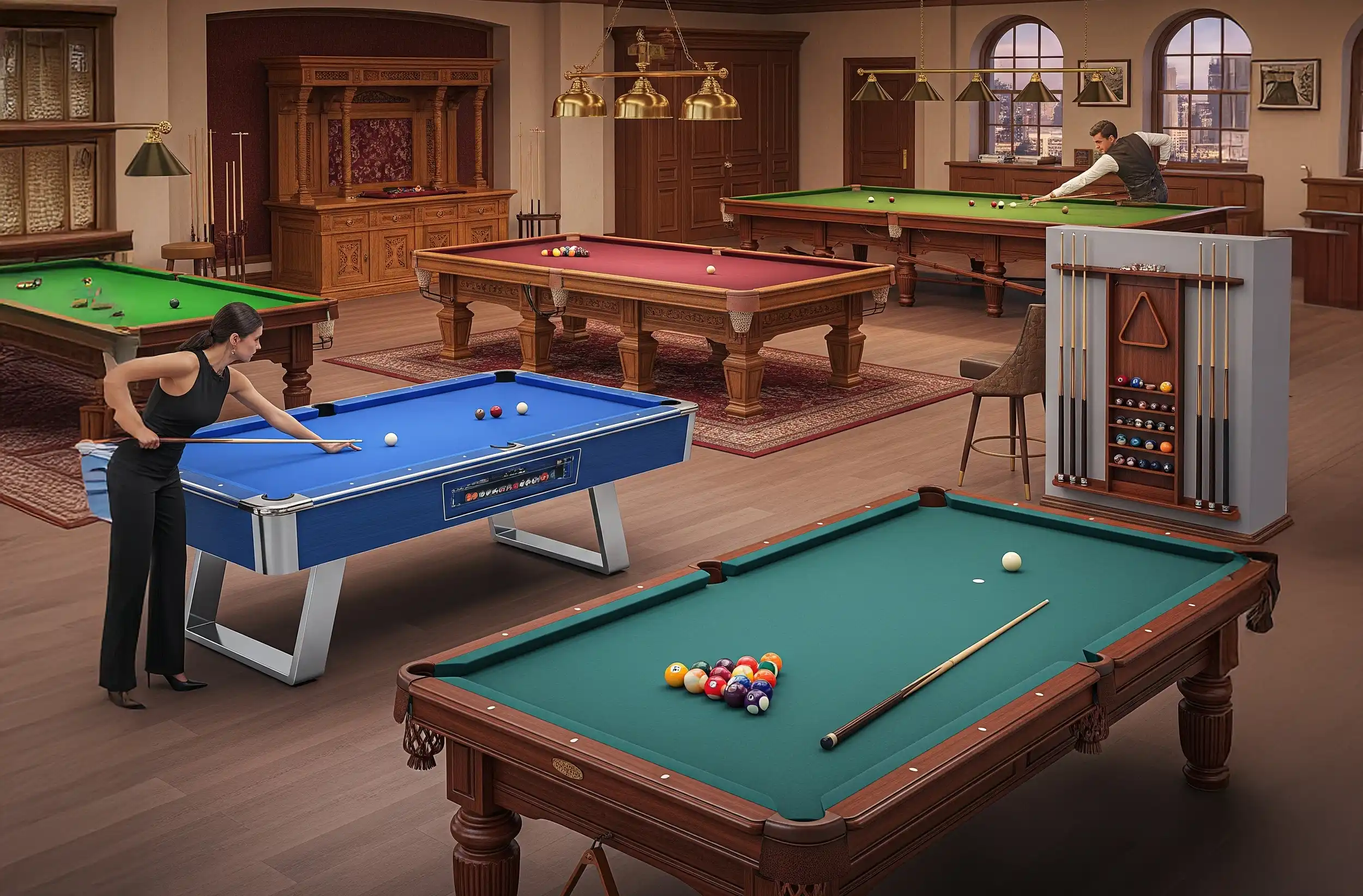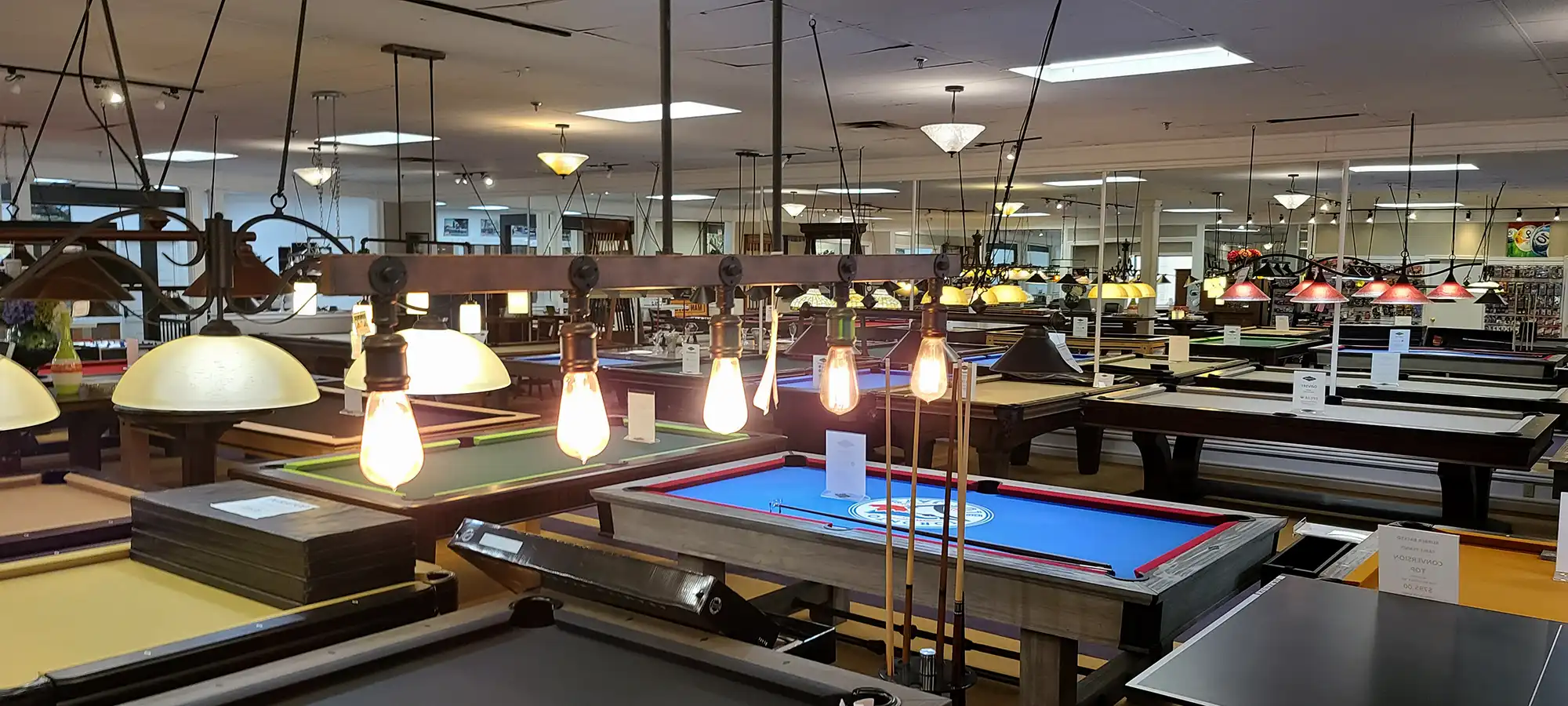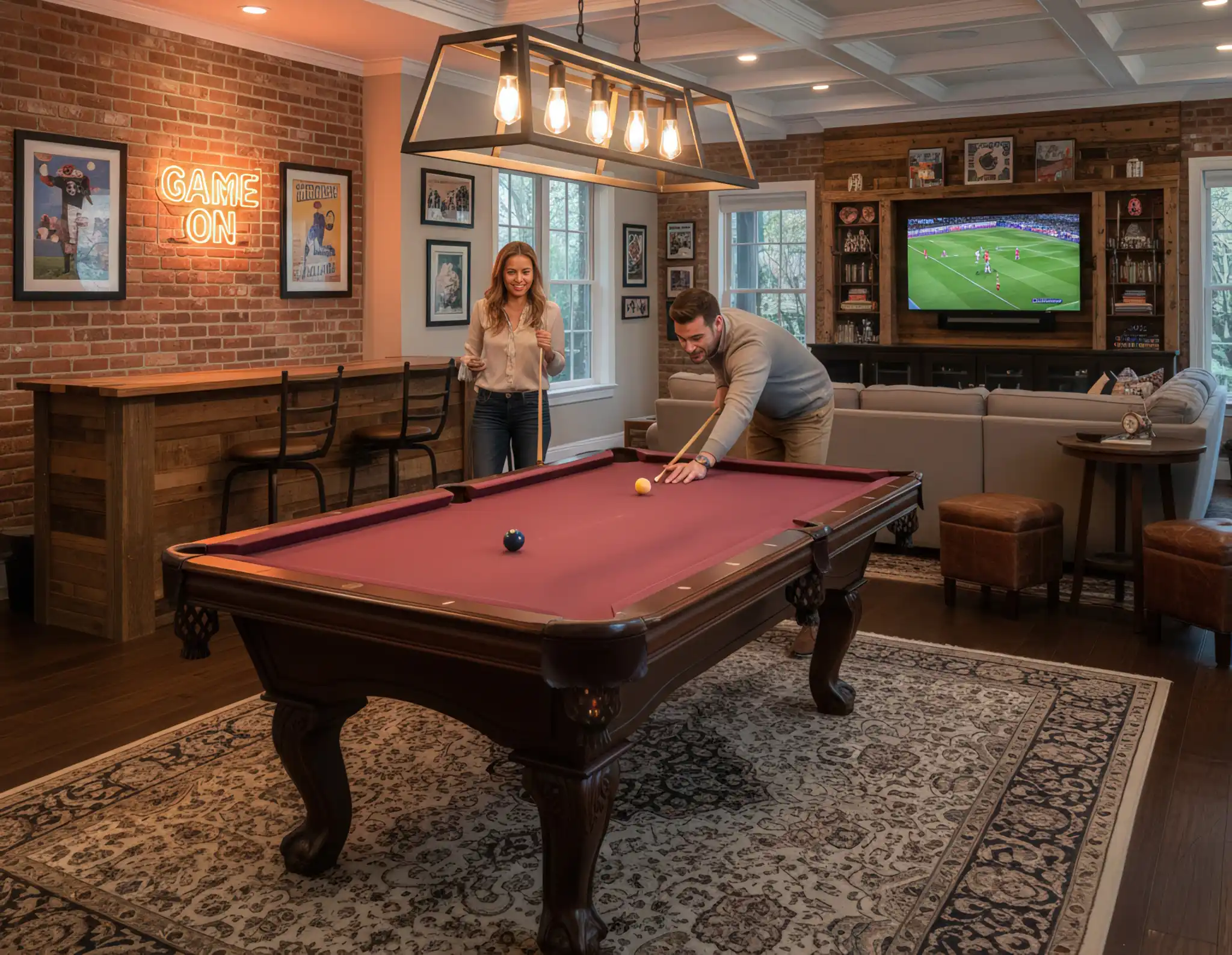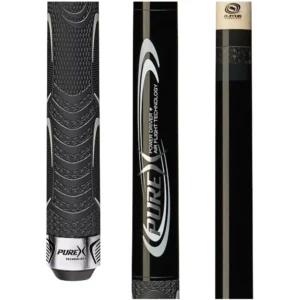Choosing a pool table can feel overwhelming. You imagine the excitement of the game and a beautiful centerpiece for your game room. However, you encounter many confusing terms: slate, felt, American, English, 7-foot, and 9-foot. Making the wrong choice is a common fear, especially with a significant investment that must fit your space, budget, and playing style. This guide cuts through the confusion by explaining the essential pool table types.
We will break down the essential differences in construction, materials, size, and style. This knowledge will empower you to select the perfect table that will bring years of enjoyment and become the heart of your home entertainment.
Key Takeaways
- The playing surface is the most critical factor for quality and performance. A 1-inch thick quarried slate bed is the industry standard for serious play and longevity.
- The type of game you want to play dictates the table. American pool tables have larger pockets for quicker play. In contrast, English or Snooker tables have smaller pockets that require more precision.
- You must accurately measure your room. For comfortable play with a standard 58-inch cue, you need at least five feet of clearance around the table.
- Frame construction matters. Solid hardwood frames and support beams provide superior stability and durability compared to MDF or particle board alternatives.
- Style has evolved beyond the classic look. Modern, rustic, and industrial designs make a pool table a great centerpiece for your home. It can match your decor perfectly.
What’s the Real Difference Between Billiards, Pool, and Snooker?
While people often use the terms interchangeably, “billiards,” “pool,” and “snooker” describe distinct games played on different tables. Understanding these core distinctions is the first step in choosing the right equipment.
The term billiard table vs pool table can be confusing, but “billiards” is a broad category. Players play Carom billiards, the most specific type of the game, on a table with no pockets at all. The objective is to carom one’s cue ball off both the opponent’s cue ball and the object ball in a single shot. Other variations exist as well, such as unique bumper pool tables that offer a different kind of challenge.
Pool, technically a form of pocket billiards, is what most people in North America envision. For this game, players use a table with six pockets and a set of 15 object balls (solids and stripes) plus a cue ball. The goal is to pocket your designated group of balls and then the 8-ball. This is the game played on a classic American pool table.
Snooker is another pocketed game but is more complex. It uses 22 balls: 15 unnumbered reds, six colored balls with point values, and one cue ball. Played on a massive table with small pockets, snooker is a game of immense precision and strategy. The larger snooker table and smaller balls create a significantly different challenge compared to pool.
What Defines an American vs. an English Pool Table?
The two primary categories of pool tables you’ll encounter are American and English, and their differences profoundly impact gameplay. The American pool table is for a faster, more aggressive style of play. They are typically larger, with 8-foot and 9-foot models being common.
Their most defining feature is wide, generous pockets with sharp, angled entries. This design is more forgiving and encourages powerful shots. The cloth is usually a napless, worsted wool blend known as “speed cloth,” which allows balls to travel farther and faster. The balls themselves are larger, at 2.25 inches in diameter.
Conversely, the English pool table is for a more tactical, strategic game. These tables are smaller, usually 6 or 7 feet long. The key difference lies in the pockets, which are significantly narrower and have rounded shoulders. This makes potting balls more difficult and places a premium on cue ball control and defensive play.
The cloth on an English table is traditionally a napped woolen “felt,” which creates more friction and slows the balls down. The balls are also smaller, typically 2 inches in diameter, which suits the tighter table dimensions.
How Do I Choose the Right Pool Table Size?
Selecting the correct pool table size is a critical decision. Your room’s dimensions, not just your preference, will dictate the right size. A table that’s too large for the room will lead to constant frustration, with walls and furniture obstructing shots. It is always better to have enough space around a small table than to squeeze a large one into a small area.
The most common sizes are 7-foot (“bar size”), 8-foot (“home size”), and 9-foot (“professional size”). To determine if a table will fit, you must account for cueing space.
The standard pool cue is 58 inches long. The most reliable calculation is to add twice the cue’s length to the playing surface dimensions.
For example, a standard 8-foot table has a playing surface of 44″ x 88″. With a 58-inch cue, you would need a room at least 13′ 8″ x 17′ 4″. While using shorter cues is an option for tight spots, it’s a compromise that affects the feel of the game.
| Table Size | Typical Playing Surface | Min. Room Size (58″ Cue) |
| 7-Foot | 39″ x 78″ | 13′ 3″ x 16′ 6″ |
| 8-Foot | 44″ x 88″ | 13′ 8″ x 17′ 4″ |
| 9-Foot | 50″ x 100″ | 14′ 2″ x 18′ 4″ |
Why is a Slate Bed Pool Table Considered the Best?
The heart of any quality pool table is its playing surface, and a pool table slate bed is the undisputed gold standard. Heat and pressure change slate, a dense rock. Quarries cut it to be very flat, often within tiny measurements. This provides the most consistent, accurate, and reliable ball roll possible.
Its primary advantage is stability. Unlike wood-based alternatives, slate will not warp from changes in humidity or temperature.
A quality table typically has a 1-inch thick slate. For larger tables, this slate usually comes in three matching pieces. This helps with transport and allows for precise leveling during installation.
The most common alternative is Medium Density Fiberboard (MDF). While MDF tables are significantly lighter and less expensive, they are a major compromise in quality.
MDF is susceptible to sagging, damage, and warping, especially when exposed to moisture. The ball roll is less consistent, and the surface lacks the durability of slate. For anyone serious about playing pool or looking for a long-term investment, a slate bed table is the only choice.
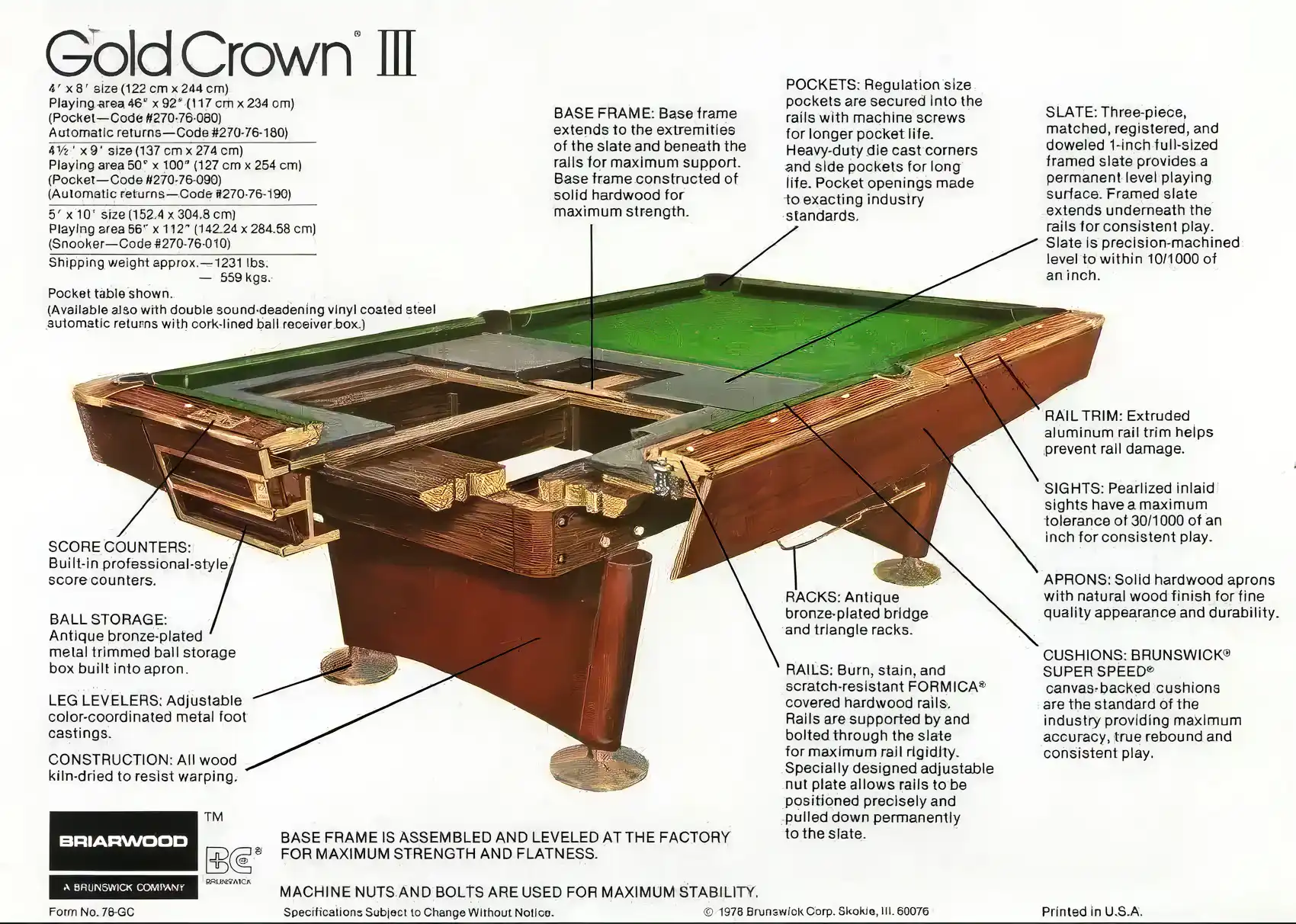
What Should I Look for in Pool Table Construction?
Beyond the slate, the pool table construction—its frame, legs, and rails—is vital for stability and longevity. To prevent sagging and ensure a level playing surface, a heavy slate bed requires a robust support system. The best tables use solid hardwoods like maple, oak, or walnut for their frames and legs. These materials provide superior strength, rigidity, and resistance to warping.
When inspecting a table, look for substantial slate support beams. Double main beams running lengthwise, supplemented by cross beams, are ideal.
They should be solid wood or thick, high-quality plywood, not MDF or particle board. The way we join the components is also crucial. Look for strong joinery and metal-to-metal fasteners.
These allow you to disassemble and reassemble the table without losing structural integrity. The rails, which hold the cushions, should also be solid hardwood to provide a consistent rebound. A well-built table will feel solid and won’t wobble or shift during aggressive play.
Frequently Asked Questions (FAQ)
What is the difference between drop pockets and a ball return system?
- Drop pockets are individual receptacles that catch and hold the balls until you manually retrieve them. They allow for sleeker, furniture-style cabinet designs. An automatic ball return system uses internal tracks to channel all pocketed balls to one collection area. This offers convenience but results in a bulkier design.
Are convertible dining pool tables any good?
- Convertible tables are an excellent space-saving solution for multi-functional rooms. They feature a removable top that transforms the game table into a dining or work surface. High-quality models can perform both functions well.However, you must ensure the design doesn’t compromise playing height, levelness, or dining comfort.
Do I need professional installation?
- For any slate bed pool table, professional installation is essential. You must perfectly level the incredibly heavy slate to ensure proper play. Experts have the tools and skills to move the pieces safely. They can put the frame together correctly, join the slate pieces, and stretch the cloth properly.
Conclusion
Choosing the right pool table is a journey of matching your space, style, and playing ambitions with the right equipment. The most important things are the basics.
First, you need a real slate bed for good performance. Second, choose the right size for your room. Lastly, ensure that the builders construct the pool table strong for durability.
You might prefer the quick pace of an American table or the strategy of an English one. It’s important to understand the main differences between them. Focus on these quality indicators. This will help you choose a table that is both beautiful and a great source of fun.
For expert advice, contact Pool Table Store today. You can also see many high-quality pool tables in the Greater Toronto Area.

